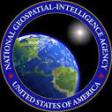NGA posts RFI for high-speed film scanning and processing
 On May 25, the National Geospatial-Intelligence Agency posted a request for information on high-speed scanning and processing of historical long-roll film. Responses are due by 9:00am Eastern on June 26.
On May 25, the National Geospatial-Intelligence Agency posted a request for information on high-speed scanning and processing of historical long-roll film. Responses are due by 9:00am Eastern on June 26.
The National Geospatial-Intelligence Agency (NGA) is seeking information on advancing high-speed scanning solutions to rapidly digitize large volumes of historical aerial and satellite earth photography on long-roll film. The desired solutions should also rapidly and automatically geo-reference the image information to improve search and retrieval of the digital data for use as machine-readable geospatial intelligence (GEOINT).
The United States’ film collection of aerial imagery reconnaissance predates World War II, starting in 1935. Satellites also took photographs from space, of which 6 million feet of film has been declassified. The aerial collection includes captured Japanese and German film of the 1930s and World War II. Some of the oldest archived film suffers from a degradation of the acetate base known as “vinegar syndrome.” NGA wishes to preserve, as much as possible, the content on this film.
NGA seeks innovative solutions from government, industry and academia to make the historical film imagery accessible in digital format at quality and fidelity levels to be established by NGA. Currently, information in the historical archives is made available on demand only through a manual, time-intensive scanning service. NGA is interested in learning about efficient, sustainable approaches to digitizing historical film in large quantities. If an appropriate solution is identified, the archive may be scanned, digitally preserved, and made available for scientific, historical, and other studies and analyses. Sample applications include looking for remains of missing in action (MIA) service personnel, seeking unexploded ordinance and land mines, and assessing land use and environmental changes.
Full information is available here.
Source: FedBizOpps








